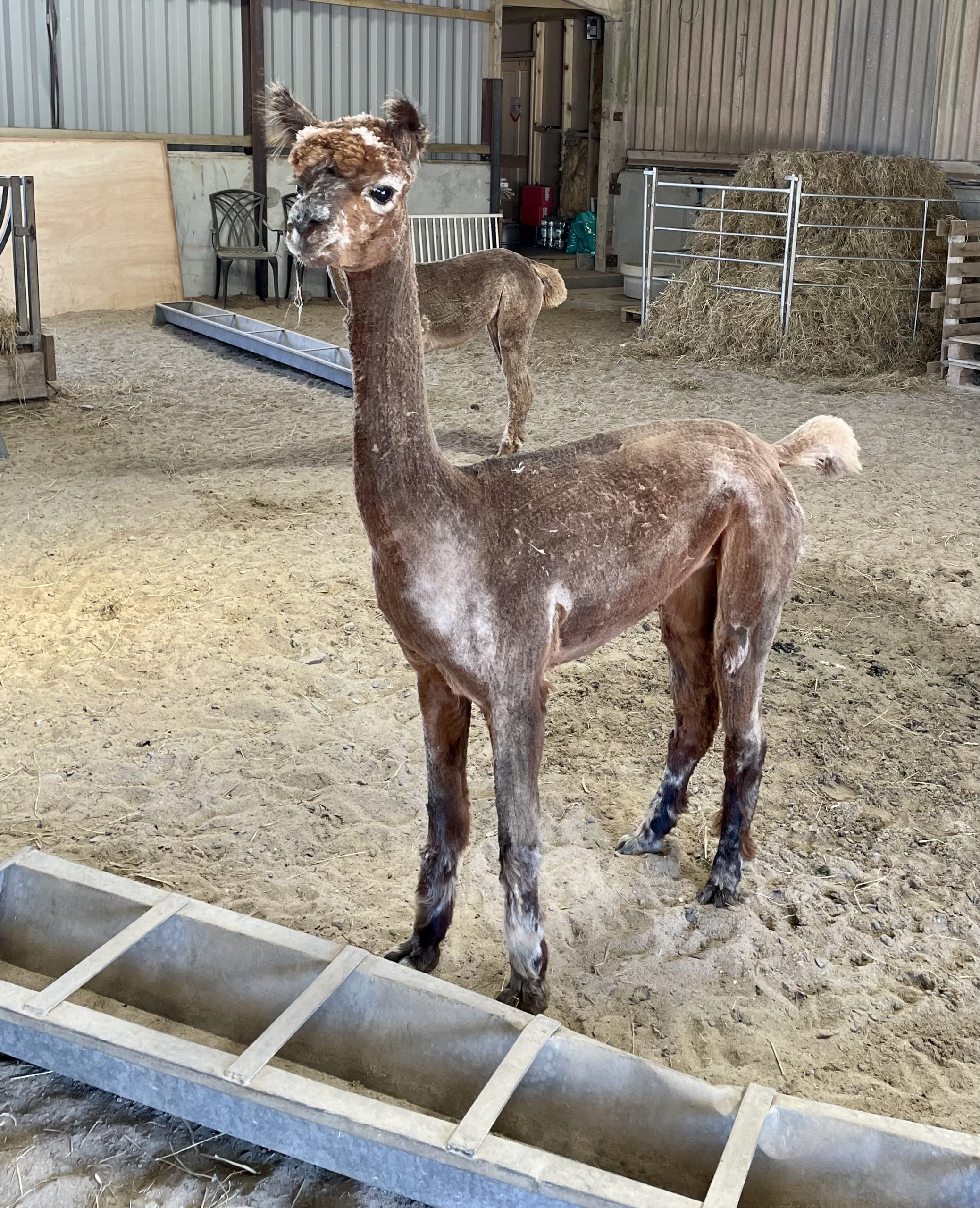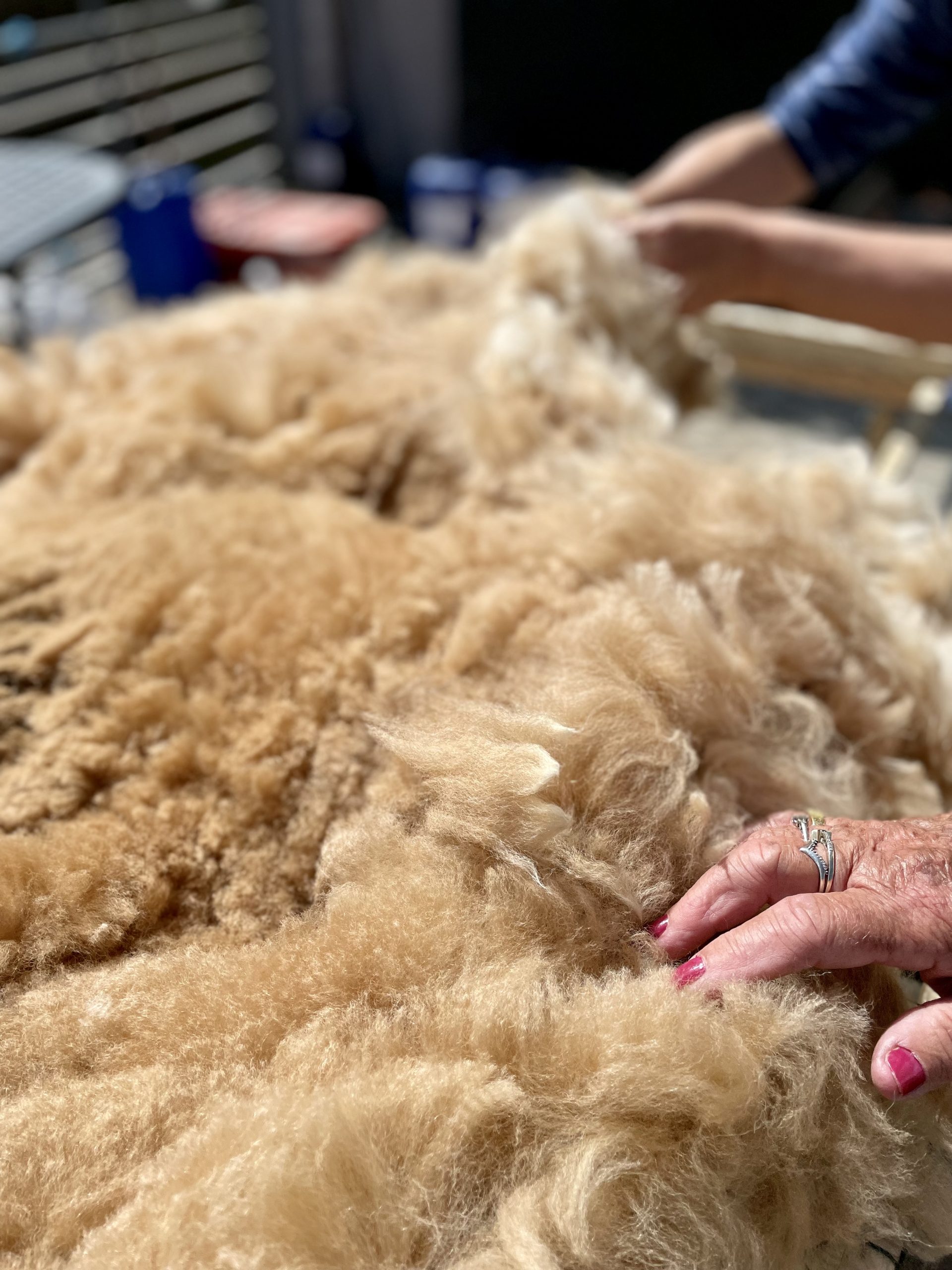23 Jun 2022
A year ago, we set about to lead the field in transparency within textiles. With a mission to showcase the incredible dedication and care that is required, behind the scenes, to make our pieces, we introduced you to Araminta the alpaca.

Beginning our journey at birth, we met Araminta as a baby cria (alpaca) and began documenting her life up until her first shearing, bringing a transparency to textiles that has never been seen before. Born in April 2021, last month was shearing day for Araminta and the rest of the heard at Mullacott Alpacas, in the heart of Devon.
Shearing takes place not only to utilise the fleece and use the natural fibre, but more importantly for the welfare of the animal. Alpaca should be sheared annually for the safety and welfare of the animal, if they are not, the fleece will continue to grow for several years causing distress. Taking place before temperatures rise too high, good weather is key for shearing day and the alpaca will only be shorn if the weather has been dry due to the impact on fleeces and alpaca.
The quality of alpaca fleece is measured in microns – the lower the micron count, the finer the quality. Before shearing day, Kate has already had her herds fleece assessed, the micron count confirmed, and fleeces allocated to people. This helps ensure that on-the-day the fleeces are kept apart and easily identifiable. Using only the finest quality British fleece for our SIGNATURE collection. Moreover, as we individually spin each fleece, it is key that we know in advance of shearing day which fleeces will be used in our collection so these can individually be set aside for us.
On the day, each herd is moved into the barn together before shearing – alpaca are herd animals and do not like to be separated. With years of experience, and tens of thousands of shears under his belt, it takes Mullacott’s shearer around 3 minutes to skilfully shear each animal. Lying on their side, the main fleece is removed in one section before the alpaca is released to the herd.

You may notice that the head and tail of the alpaca are left unshorn, this is because the alpaca recognise one another by scent and smelling the head and tail fleece to identify their friends!
One shorn, the fleece undergoes ‘carding’ which is technique to remove any loose debris alongside removal of any lower quality fleece. Any lower quality fleece that is removed, is bagged up used by local craftspeople, schools, and volunteers. No fleece is wasted and the ‘seconds’ for every animal will go on to be utilised and enjoyed.

Once the fleece has been carded, it is named, bagged, and grouped before it begins its journey in the spinning mills.
Araminta fleece is an exquisite colour and a quality that we are thrilled to confirm will be used to make a piece in our SIGNATURE collection. Whilst the first year of Araminta’s life might now be complete, our journey following her, and her fleece, is continuing.
We are delighted to be moving to the second year of this story, showcasing not only more of Araminta, but also the story of the spinning team alongside that of our handweavers.
"*" indicates required fields